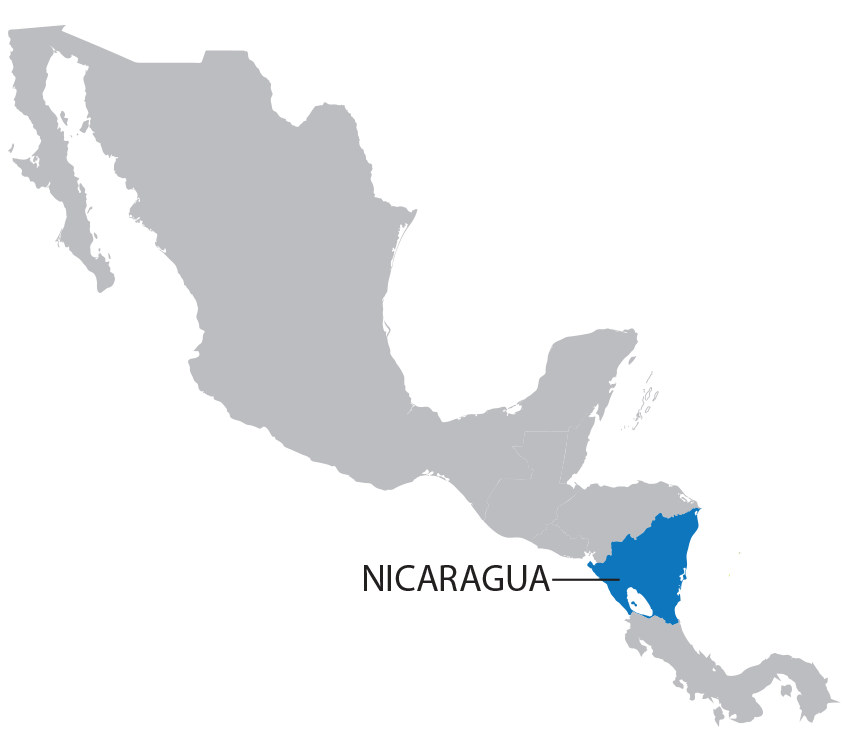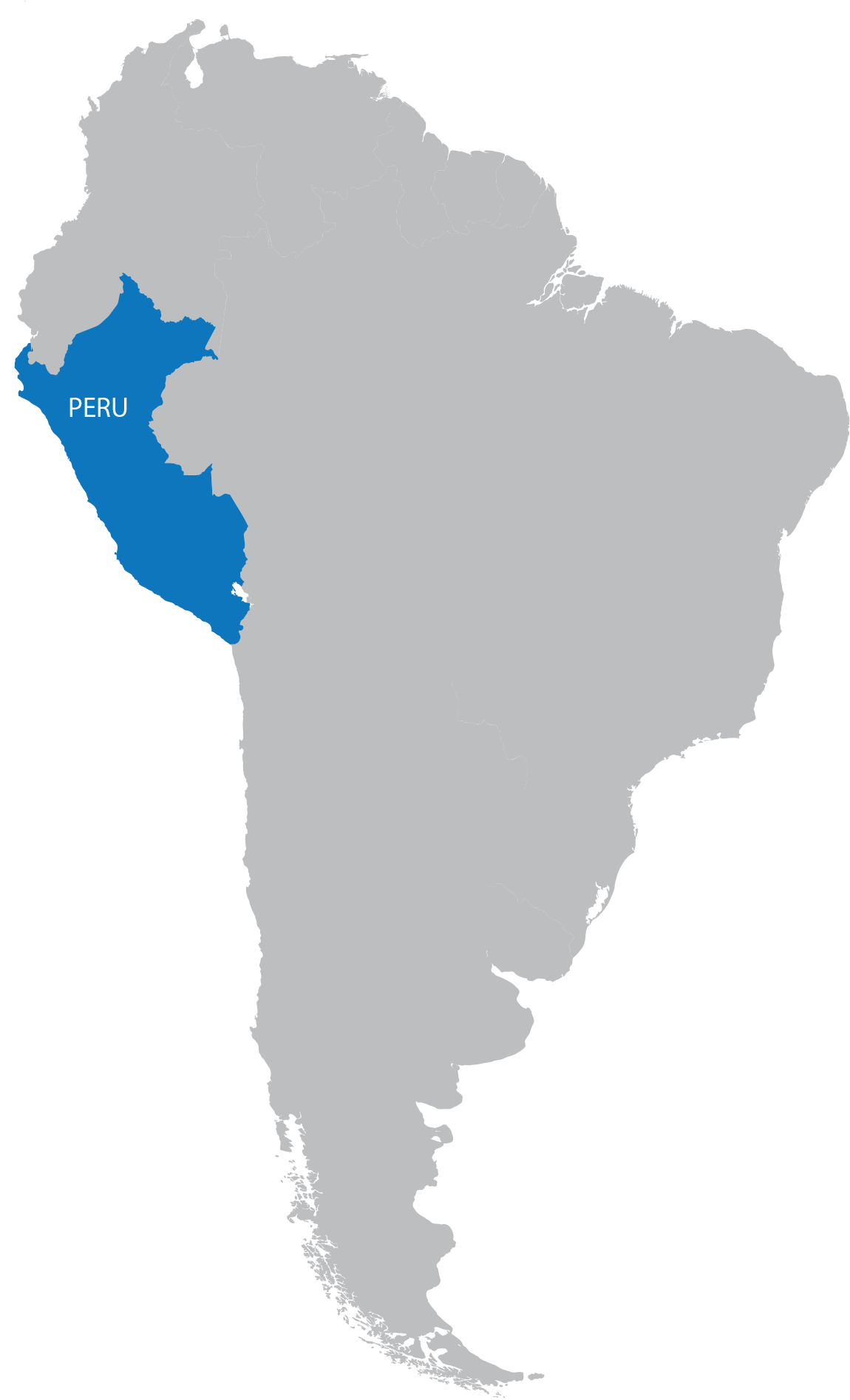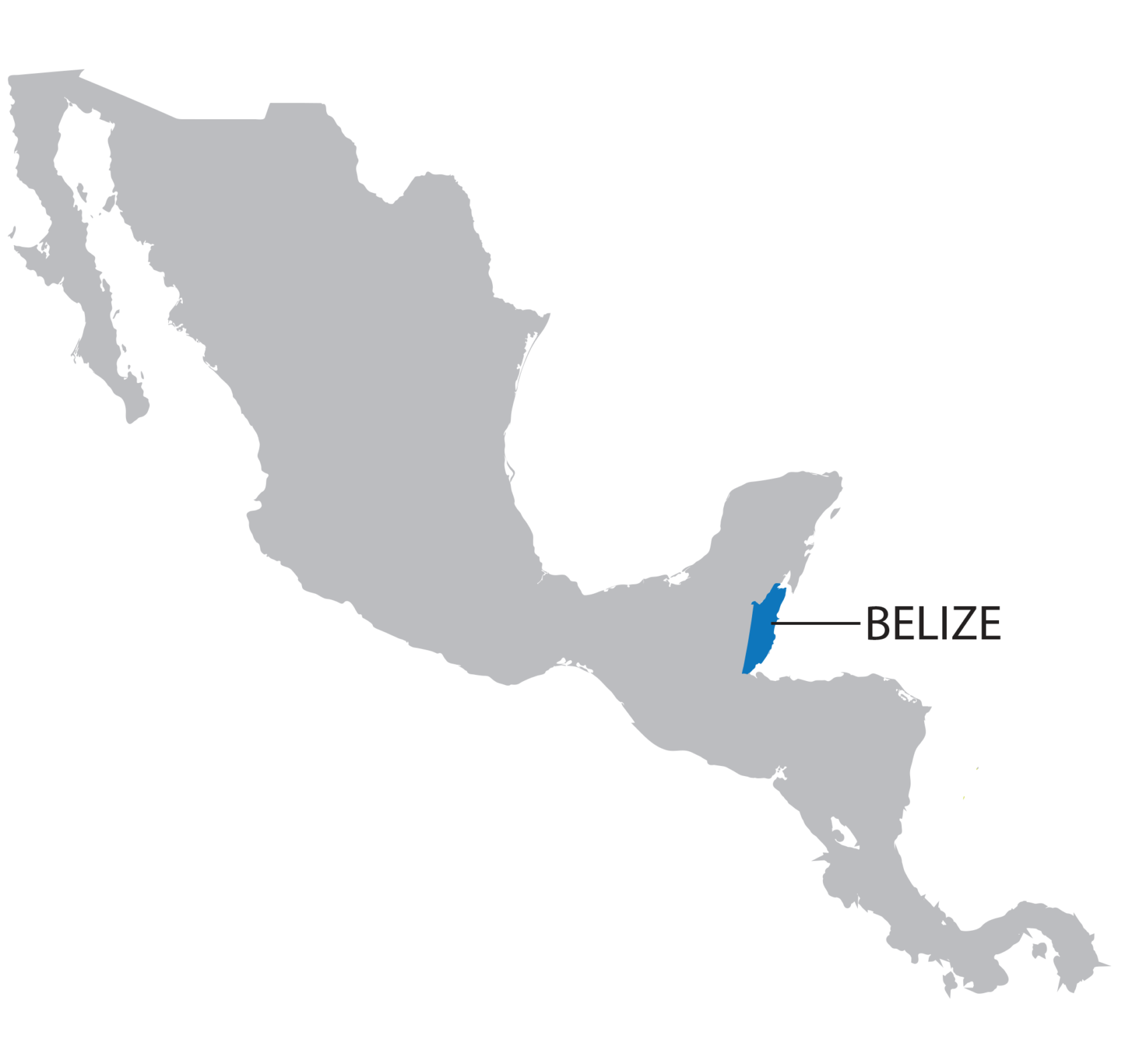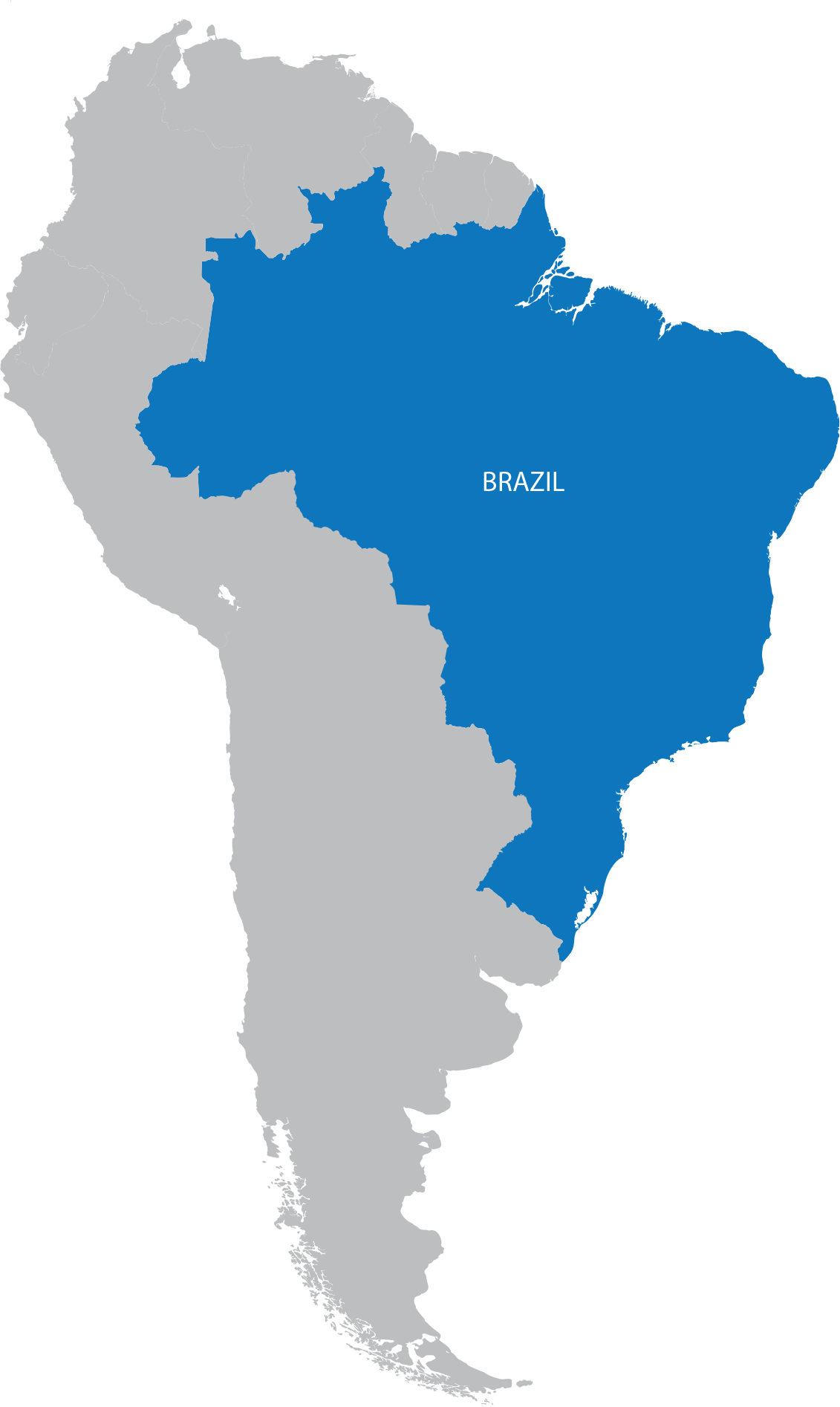Latin America Regulatory Compliance Group
Type Approvals for Latin America and the Caribbean
Latin America Regulatory Compliance GroupLatin America:
We Know the Territory
Our service area, Latin America, contains a multitude of cultures and languages across North America (Mexico, Central America, and the Caribbean) and South America. South America counts 12 sovereignties and three dependencies. Central America has seven nations. And the Caribbean embraces 30 states and dependencies. Including Mexico, that’s 50 political entities altogether in what we call LatAm — and each with its own regulatory agencies and ever-changing rules. It keeps us busy.
Argentina
With prodigious natural resources, a highly literate population, a diversified industrial base, and an export-oriented agricultural sector, Argentina is Latin America’s third-largest economy, surpassed only by Brazil and Mexico. Products include: food, wine, textiles, leather, fuel, chemicals, pharmaceuticals, metals, machinery, appliances, plastics, tires, glass, and cement. It’s South America’s top tourist destination and Latin America’s second (after Mexico).
Today one of the world’s top developing nations, Argentina a century ago was the seventh wealthiest country in the world. Even after decades of political and economic volatility, it’s a member of the G-20 major economies and ranks second highest in the Human Development Index in Latin America. It’s highly urbanized (92% live in cities) and has a considerable internal market and a growing share of the high-tech sector.
Argentina also has a history of scientific and technological innovation. Its doctors and scientists have scored numerous advancements in nanotechnology, physics, computer science, molecular biology, oncology, ecology, and cardiology. Today, space research is a growing field. The country was the site of the world’s first regular radio broadcast (1920) and of Latin America’s first nuclear power plant. It has South America’s highest coverage of networked telecommunications and 67% of its population has internet access.
Bolivia
Bolivia is one of only two landlocked countries in the Americas (Paraguay being the other). For over a decade Bolivia has had one of the highest economic growth rates in Latin America, but it remains the second poorest country in South America. It is a developing country, with a medium ranking in the Human Development Index, a poverty level of about 40% yet one of the lowest crime rates in Latin America. Spanish is the official and predominant language, although 36 indigenous languages are spoken (particularly Aymara and Quechua).
Bolivia is very rich in minerals and its major economic activities include mining, refining, agriculture, forestry, fishing, textiles. It has the second largest natural gas reserves in South America and up to 70% of the world’s reserves of lithium. Income from tourism is increasingly important.
Brazil
Brazil lives large. The Portuguese-speaking country is LatAm’s biggest by far, in terms of area, economy and population — and worldwide its area ranks fifth and its economy eighth. Brazil borders every country in South America except Ecuador and Chile and accounts for about half of the continent’s people and land.
As one of the famous “BRIC” nations (along with Russia, India, and China), this country with the world’s sixth largest labor force is the epitome of an emerging power. It has a growing tech market and LatAm’s only semiconductor firm with a fabrication plant (CEITEC). It’s also the world’s third largest producer of civil aircraft and has the second largest number of airports, after the U.S. It’s one of the cleanest energy producers (three-quarters of its electricity comes from hydropower and its Itaipu dam is the world’s second largest). Industry – including automobiles, steel, petrochemicals, computers, aircraft and consumer durables – accounts for almost a third of GDP and it’s the world’s fourth largest car market. Yet its agricultural past remains strong — it’s the world’s second largest agricultural exporter, and its largest producer of coffee for 150 years running.
Chile
Chile is a “high-income economy” according to the World Bank, with a per capita GDP exceeding $16,000, the 49th highest in the world. The country, with a highly literate population, has well developed agricultural, mining, and service sectors. It leads Latin American nations in rankings of human development, competitiveness, income per capita, globalization, economic freedom, and low perception of corruption, and in the western hemisphere only Canada has a lower homicide rate.


Colombia
Spanish is the language one typically associates with Latin America, but Colombia is an example of the linguistic diversity of this part of the world. The country recognizes 68 ethnic languages and dialects, and English is the official language in its archipelago of San Andrés, Providencia and Santa Catalina.
Traditionally rural, Colombia is now one of Latin America’s most urbanized. With about 50 million people, Colombia is the third-most populous country in Latin America (after Brazil and Mexico) and its stable, fast-growing, diversified economy is LatAm’s fourth largest. Domestic demand is the largest component of GDP. Foreign tourist visits have increased seven fold in the last decade.
Rich in natural resources, Colombia’s main exports include petroleum products, agriculture, metals, gemstones, clothing, and electronic equipment. The country also has some 4,000 research groups in science and technology. Important inventions related to the medicine have been made in Colombia, including the first external artificial pacemaker with internal electrodes, the basis for LASIK eye surgery, and the Hakim valve.
The country’s diversity takes other forms. Encompassing rainforest, grassland and Pacific and Caribbean coastlines, Colombia is one of the world’s 17 mega-diverse countries. Overall, it’s the second most bio-diverse country in the world (most animal and plant species), after only Brazil, which is seven times larger. Renewable energy sources (especially hydroelectric) produce most of the country’s electricity. Colombia is ranked third in the world in the Happy Planet Index, a measure of environmental sustainability compiled by the New Economics Foundation (NEF).
Costa Rica
Costa Rica, one of few nations in the world without a standing army, is known for its political stability and highly educated workforce, most of whom speak English. Some 7% of the government budget goes to education (the global average is 4.4%), and the literacy rate is 97%, one of highest in Latin America. The country has one of the highest standards of living in Central America, with affordable healthcare and affordable housing, and is one of the highest-ranking LatAm nations in the Human Development Index (HDI).
At four-fifths of GDP, services dominate Costa Rica’s diversified economy. Many foreign manufacturing and services companies operate free trade zones, which support more than 125,000 jobs directly and indirectly.
Costa Rica is also known for its advanced environmental policies, and is the only country to meet all five criteria that the United Nations Development Program uses to measure environmental sustainability. By 2016, 98% of its electricity was generated from green sources (hydro, solar, geothermal and biomass) and by 2021 the country aims to be carbon-neutral. It has been named the best performing country in “Happy Planet Index,” a measure of environmental sustainability. The country has shrewdly monetized its environmental commitment by marketing itself as the ultimate eco-destination and a model for sustainable tourism. Consequently, it’s the most visited nation in the Central American region, and tourism supports almost 400,000 jobs directly and indirectly.

Cuba
Long isolated by geopolitics, Cuba is starting to re-emerge. With one of the highest literacy rates in the world, Cuba is developing its tourism industry and produces an array of goods and services, from medical care to cigars to nickel (7% of the world’s total output). A powerhouse in sports, Cuba also hits above its weight culturally — mambo, cha-cha-chá and salsa are some of the genres based on the island’s Son music.
Dominican Republic
Occupying the eastern half of the island of Hispaniola, the Dominican Republic is the second-largest Caribbean nation by area and by population. It has the largest economy in the Caribbean and Central American region and the ninth largest in Latin America. It has been one of the fastest-growing economies in the western hemisphere over the last quarter century, driven by private consumption, construction, manufacturing, tourism, and mining (the country has world’s second largest gold mine). With golf a major draw, it also is the most visited destination in the Caribbean.


Ecuador
Ecuador, the eighth largest economy in Latin America, is considered by the World Bank to be upper-middle-income. It is a developing economy dependent on petroleum and agricultural products (it leads the world in banana production and export). But its environmental protections are world class, fitting as its Galápagos Islands are the birthplace of Darwin’s Theory of Evolution and the country may have the most animal and plant species per square mile on the planet. Its constitution is the first in the world to recognize enforceable ecosystem rights (“Rights of Nature”).
El Salvador
Although it struggles with poverty, natural disasters, corruption, and crime, El Salvador strives to promote open trade and investment to diversify and strengthen its economy. It was the first country to ratify the Central American Free Trade Agreement (CAFTA), which requires policies that foster free trade. There are a total of 15 free trade zones in El Salvador, and it has privatized telecommunications, electricity distribution, banking, and pension funds. Tourism is the fastest-growing sector of the economy, directly and indirectly supporting about 300,000 jobs (more than 10% of total employment). The country uses the U.S. dollar as its currency, and a third of Salvadoran households receive remittances for relatives living in the U.S., inflows equivalent to nearly all export income and enough to offset the substantial trade deficit.


Guatemala
Guatemala is the largest economy in Central America, yet one of the poorest and least literate in Latin America. Income distribution is highly unequal with more than half of the population below the poverty line. It’s one of the youngest countries in the Western Hemisphere, comparable to central Africa and Iraq. Main exports include fruits, vegetables, coffee, textiles, and biofuel material. The service sector is the largest component of GDP (at 63%), followed by the industry and agriculture. The agricultural sector accounts for about two-fifths of exports, and half of the labor force. Remittances from Guatemalans living in U.S. (perhaps 1.5 million people) are the largest source of foreign income (two-thirds of exports and one-tenth of GDP). Drawn to beaches and Mayan sites like Tikal, tourism has become a main driver of the economy thanks to the new foreign investment.
Guyana
Guyana is the only South American country with English as its official language. Approximately 90% of its 740,000 people live in the coastal in an area equivalent to only 10% of the territory. The principal exports are sugar, gold, and bauxite.


Haiti
Haiti occupies the western part of Hispaniola, the second largest island in the Greater Antilles. Despite having a viable tourist industry, it is one of the world’s poorest countries and the poorest in the Americas. More than 90 percent of the government’s budget comes from an agreement with Petrocaribe, a Venezuela-led oil alliance.
Honduras
Honduras, where up to two-thirds of the population live in poverty, is classified as “low middle-income” by the World Bank. Income inequality is higher than in any other Latin American country and the country has seen the least development of all Central American countries. Poverty is concentrated in rural areas (a pattern throughout Latin America) and natural disasters can have a particularly devastating impact as small-scale agriculture dominates the economy. Nevertheless, economic growth has recently been one of the highest Latin America. The Central America-Dominican Republic Free Trade Agreement (CAFTA) required the telecommunication sector to be opened to private investment and today Hondutel (the land-line phone company controlled by the government, along with the electrical grid) is no longer a monopoly.


Jamaica
Land of reggae, track and field superstars, and much more, Jamaica is third-most populous English-speaking country in the Americas after the U.S. and Canada, and the fourth-most populous country in the Caribbean. Three quarters of its 2.7 million people live in the capital city, Kingston. It’s considered an upper-middle income country with economic sectors including agriculture, food processing, mining, manufacturing, refining, data processing, and financial and insurance services. Tourism is the largest earner of foreign exchange.
Since the early 1980s, the country has tried to boost the economy by reducing the size of government and by being more open to trade, investment, privatization, and financial flows. The free-trade zones at Kingston, Montego Bay and Spanish Town allow duty-free importation, tax-free profits, and free repatriation of export earnings. The country still has a heavy debt-to-GDP ratio but by 2018 its bond ratings were upgraded to “stable” and “positive.” In 2019 it had its lowest unemployment rate in 50 years.
Looking forward, the Chinese government is building a gigantic shipping and logistics hub in Kingston, positioning the country as the fourth node in a global chain including Rotterdam, Dubai, and Singapore.
Mexico
Mexico is a world unto itself. With Latin America’s second largest economy and population, its 120 million people represent the largest Spanish-speaking population globally and the 15th largest economy. Today classified as upper-middle income by the World Bank, Mexico could have the world’s 5th largest economy by 2050, according to Goldman Sachs.
In 1994, the year Mexico signed the NAFTA trade agreement binding it closer to the economies of the U.S. and Canada, it also became the first Latin American member of the Organization for Economic Co-operation and Development (OECD). It maintains a substantial positive trade balance, with foreign income in oil, manufactured goods, electronics, heavy industry, automobiles, construction, food, financial services, and remittances from citizens abroad.
Mexico has the sixth largest electronics industry in the world and produces the most automobiles in the Americas. More than four-fifths of Mexicans over the age of 14 own a mobile phone, although landline penetration per capita is low compared to the rest of LatAm. Telmex dominates the country’s telecommunications industry; another private company, Satmex is a leading designer, builder and manager of satellite fleets throughout North and South America.
Tourism is also a very big business. With 39 million international arrivals in 2018, Mexico is the most visited country in LatAm, and the sixth most in the world. There is a lot to see: Aside from its famous beach resorts, Mexico ranks first in the Americas and 7th worldwide for number of UNESCO World Heritage Sites, and 4th in the world for biodiversity.
To ensure future growth, the National Infrastructure Program plans to spend hundreds of billions to improve communication networks, energy, housing, health care, water, and tourism facilities.


Nicaragua
Nicaragua is among the poorest countries in the Americas, but biological diversity, colonial towns, ecotourism, sport fishing, surfing, and active volcanoes make the country an increasingly popular tourist destination. Agriculture represents 15% of GDP and 60% of total exports; coffee is among the most important products. Remittances from abroad account for another 15% of GDP. Infrastructure is lacking although the government has long advocated for a new canal to supplement the Panama Canal, despite the lack of financing and the protestations of environmentalists.
Panama
Famous for the canal that transformed world trade and helped usher in the American Century, Panama is today a major haven for banking and wealth management. Independent since 1903, the country remains tied to the U.S., and dollars are legal tender. The Colón Free Trade Zone, the largest free trade zone in the Western Hemisphere accounted last year for 92% of Panama’s exports and 64% of its imports.


Paraguay
Without a coastline, Paraguay has access to the Atlantic via the Parana and Uruguay rivers. The country enjoys excess renewable energy production of 8,700 MW, with a current domestic demand of only 2,300 MW. Ciudad del Este is the third most important free commercial zone in the world, trailing Miami and Hong Kong.
Peru
Peru has one of the longest histories of civilization of any country, tracing its heritage back 6,000 years. Today it’s the world’s 48th largest economy and classified as upper middle income by the World Bank, with a high ranking in social freedom and human development.
Peru is one of the “Pacific Pumas,” countries along Latin America’s Pacific coast that share common trends of positive growth, stable macroeconomic foundations, improved governance and an openness to global integration. It’s the fourth most populous country in South America, with about four-fifths living in urban areas. Its main economic activities include mining, manufacturing, agriculture, and fishing; telecommunications and biotechnology are growing sectors. It is one of the region’s most prosperous economies and it has one of the world’s fastest industrial growth rates, averaging above 9% per year.


Suriname
Dutch is the official language in this, the smallest and least populated country in South America, although an English-based creole language is also widely used. The country has significant oil and gold reserves and 98 percent of the country is rainforest. One-third of the country is classified as nature reserves and is home to some of the most remote wilderness left on the planet. Tourism is on the rise.
Uruguay
Wedged between large neighbors Brazil and Argentina, Uruguay is a high-income country and one of the most progressive nations in the world. It ranks highly for the size of its middle class, democratic stability, lack of corruption, e-government, and press freedom. The capital city of Montevideo is home to half of the country’s 3.5 million people. After Suriname, it’s the second smallest country on the continent, and has 410 miles of coastline increasingly popular with tourists.


Venezuela
With the largest oil reserves in the world, Venezuela depends on the commodity for at least a third of its GDP, 80% of exports, and most government revenues. Its current political instability and the catastrophic collapse of its economy mask vast potential of what was once one of the world’s wealthiest nations.
Other Caribbean Countries
The Caribbean region of North America counts 30 sovereign states and dependent territories with about 43 million people. The area exceeds one million square miles, only 92,541 square miles of which is land area. There are some 700 islands, many of them uninhabited. The most populous are Cuba, Dominican Republic, Haiti, Puerto Rico, and Trinidad and Tobago. The rest do not have populations exceeding half a million people.





